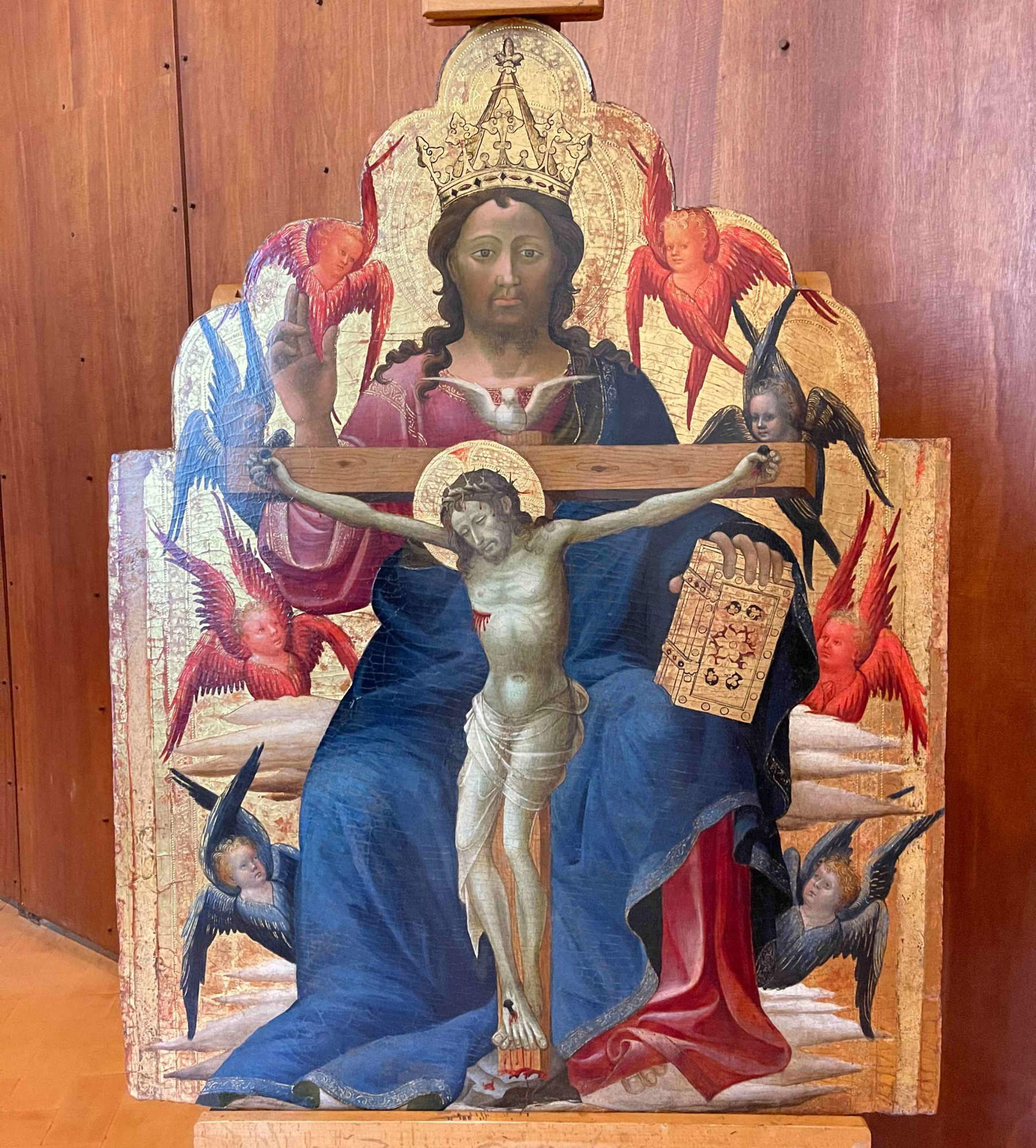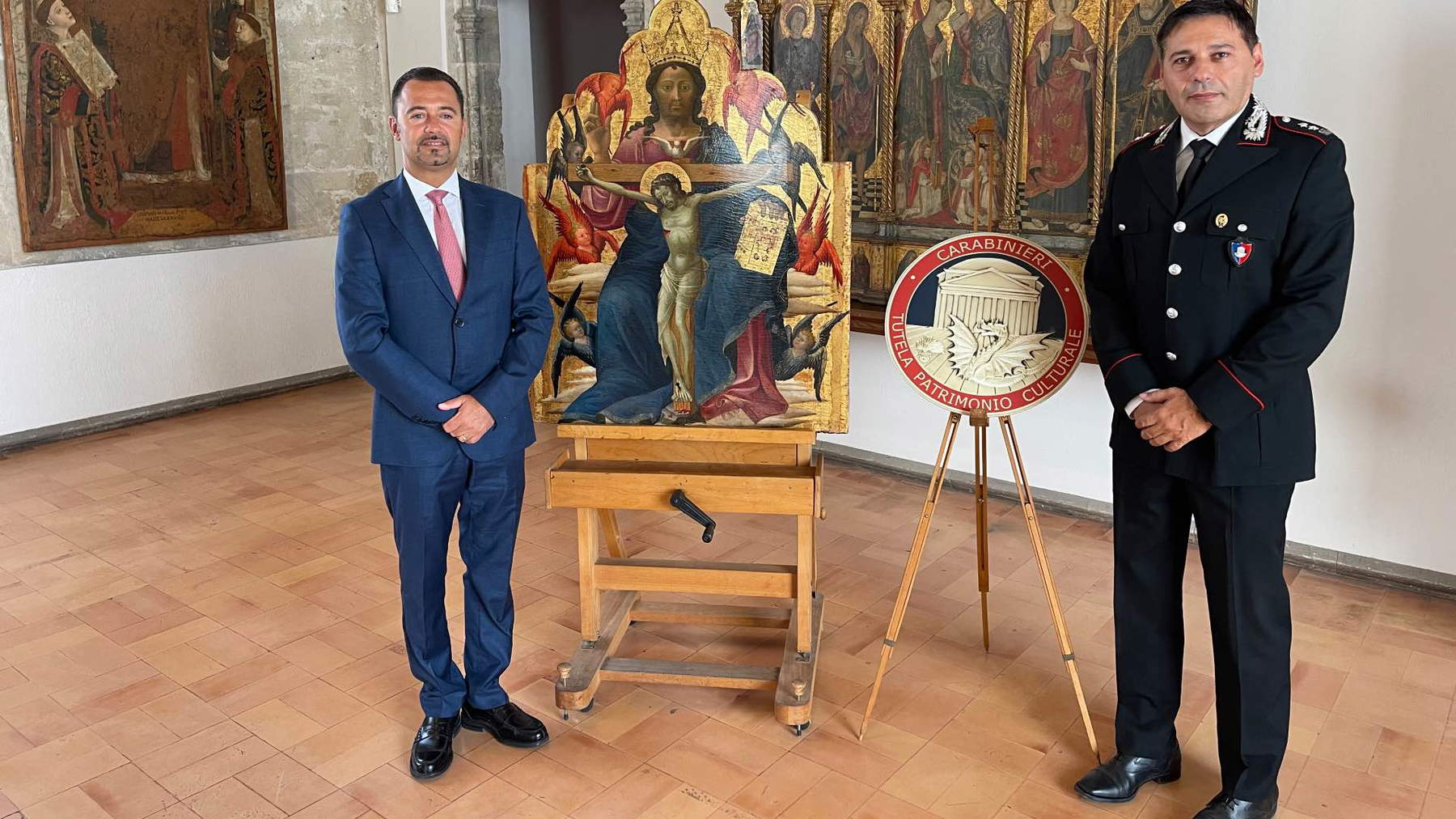Last Aug. 6, at 6:30 p.m., at the headquarters of the Regional Museum “Abatellis” in Palermo, a Trinity on panel, attributed to Gherardo Starnina (Florence, 1354 - 1413), was formally handed over to the Regional Councillor for Cultural Heritage and Sicilian Identity. The work, subject to confiscation and already belonging to a restricted private collection, was brought back to Sicily at the end of a complex judicial affair involving the Carabinieri Command for the Protection of Cultural Heritage (TPC) in Palermo. The handing-over ceremony was the culmination of an investigation conducted in close cooperation between the Carabinieri TPC Nucleus of Palermo, the Operational Department of the Carabinieri TPC Command in Rome and the protection agencies of the Regional Department of Cultural Heritage and Sicilian Identity, under the coordination of the Palermo Public Prosecutor’s Office.
The investigation had stemmed from a timely report by theExport Office of the Palermo Superintendency for Cultural and Environmental Heritage, which had detected documentary irregularities related to the table. Subsequent in-depth investigations had ascertained that the painting, part of a restricted private collection, had been illegally exported abroad and sold to a foreign gallery owner for a sum of around 500,000 euros. The buyer, according to authorities, was uninvolved in the illicit acts.


The seizure of the property had taken place at the Ventimiglia border crossing, and the measure prevented its final transfer outside the national borders. After various degrees of judgment, the Court of Cassation had confirmed the confiscation of the painting, assigning it to the Regional Department of Cultural Heritage and Sicilian Identity. Hence the decision to assign it to the Regional Museum “Abatellis” in Palermo, where the Trinity will be exhibited and shown to the public.
The work is a gold background panel of great refinement, dominated by the figure of God the Father blessing, at the top of which are superimposed the dove of the Holy Spirit and Christ Crucified. The composition has been attributed to Gherardo di Jacopo, known as the Starnina, one of the most important Italian painters of the late Gothic period, active between 1387 and 1409. A pupil of Antonio Veneziano, Starnina is documented in France and Spain, with definite presences in Toledo and Valencia. In these contexts, probably also working in collaboration with Iberian artists, he assimilated the figurative models of international Gothic. Back in Florence, he successfully disseminated this artistic language enriched by experiences gained across the border, obtaining prestigious commissions.
His production is characterized by meticulous attention to decorative details, particularly in textile motifs, and the use of intense chromatics. Elements that combine with a monumentality of the figures inherited from the Giottesque tradition, with broad, plastic draperies that give solidity to the scenes. In the Trinity panel, these characteristics are evident in the iridescence of the seraphim, the broad gilding and the refined definition of details. Starnina played a leading role in the development of Florentine painting at the turn of the 14th and 15th centuries, helping to graft onto the solid base of Giotto’s lesson the chromatic and decorative refinements of international Gothic.
The return of the Trinity to Palermo represents not only an investigative success, but also a moment of enrichment for Sicily’s cultural heritage. The Abatellis Museum, which already holds such extraordinarily important works as Antonello da Messina’s Annunziata, will now be able to offer visitors a further piece of late Gothic Italian painting, recovered to the community after years of absence.
The Comando Carabinieri per la Tutela del Patrimonio Culturale, an institution specialized in combating crimes against artistic and archaeological heritage, reiterated on this occasion the effectiveness of the collaboration between law enforcement and cultural institutions. A synergy that has made it possible not only to detect and stop illicit trafficking, but also to ensure that a work of great historical and artistic value returns to shared heritage.
“I express a lively and heartfelt applause to the Carabinieri Nucleo Tutela Patrimonio Culturale of Palermo for the goals achieved in recent years in the protection and enhancement of our cultural heritage,” said Francesco Paolo Scarpinato, regional councilor for cultural heritage. “Extraordinary results, the result of commendable work, carried out with dedication, competence and spirit of service. Not the least of which is the exceptional operation that has made it possible to return to public enjoyment a work of extraordinary historical and artistic value. The delivery of this table represents not only a relevant recovery for our heritage, but also a concrete demonstration of the effectiveness of synergistic work between institutions. We are honored and proud of this assignment that, once again, testifies to the fruitful inter-institutional collaboration between our Department, the Public Prosecutor’s Office and the Carabinieri of the TPC, to protect works of art. Paintings with this do not belong only to a museum, but to the entire community, which has the right to know, admire and cherish them.”
 |
| Palermo, Carabinieri hand over valuable gold fund confiscated after illicit exportation |
Warning: the translation into English of the original Italian article was created using automatic tools. We undertake to review all articles, but we do not guarantee the total absence of inaccuracies in the translation due to the program. You can find the original by clicking on the ITA button. If you find any mistake,please contact us.